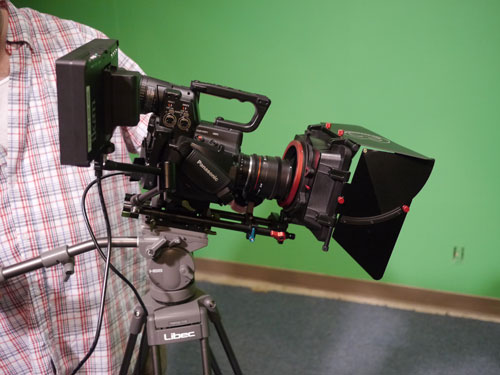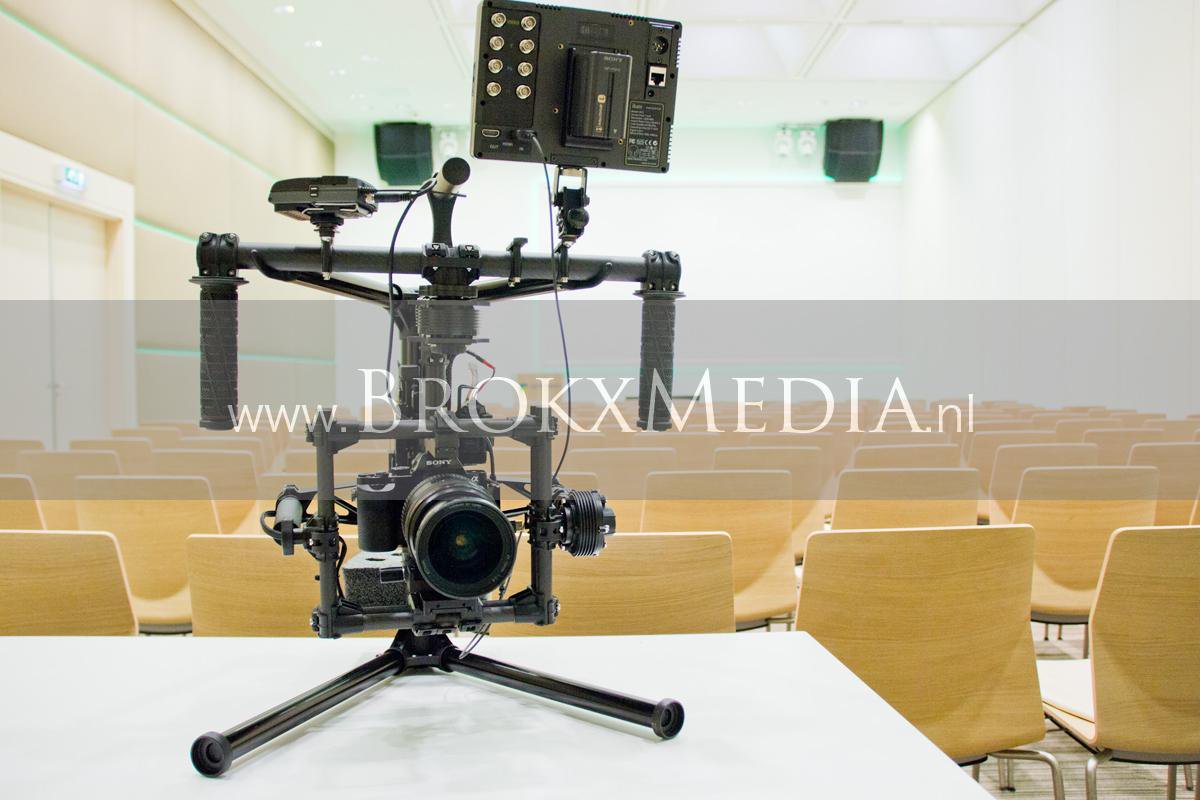-
 ✅ Technical and creative solutions for your film.
✅ Technical and creative solutions for your film.
✅ Screenplay formatting help, plot and story guidance.
✅ A respectful community of professionals and newbies.
✅ Network with composers, editors, cast, crew, and more!
🎬 IndieTalk - Filmmaking and Screenwriting help site and community.
By filmmakers, for filmmakers since 2003
You are using an out of date browser. It may not display this or other websites correctly.
You should upgrade or use an alternative browser.
You should upgrade or use an alternative browser.
Photos of Your Gear, Rigs, Setups, Etc.
- Thread starter Jack Lynt
- Start date
Ma rig.
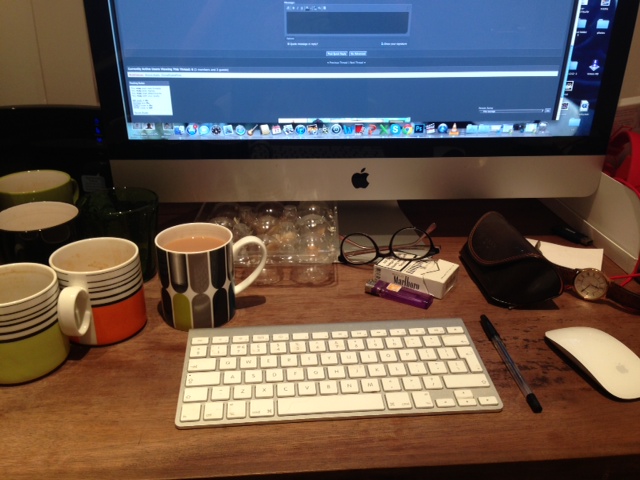

The RED rig that was on the crane (minus the on-board monitor):
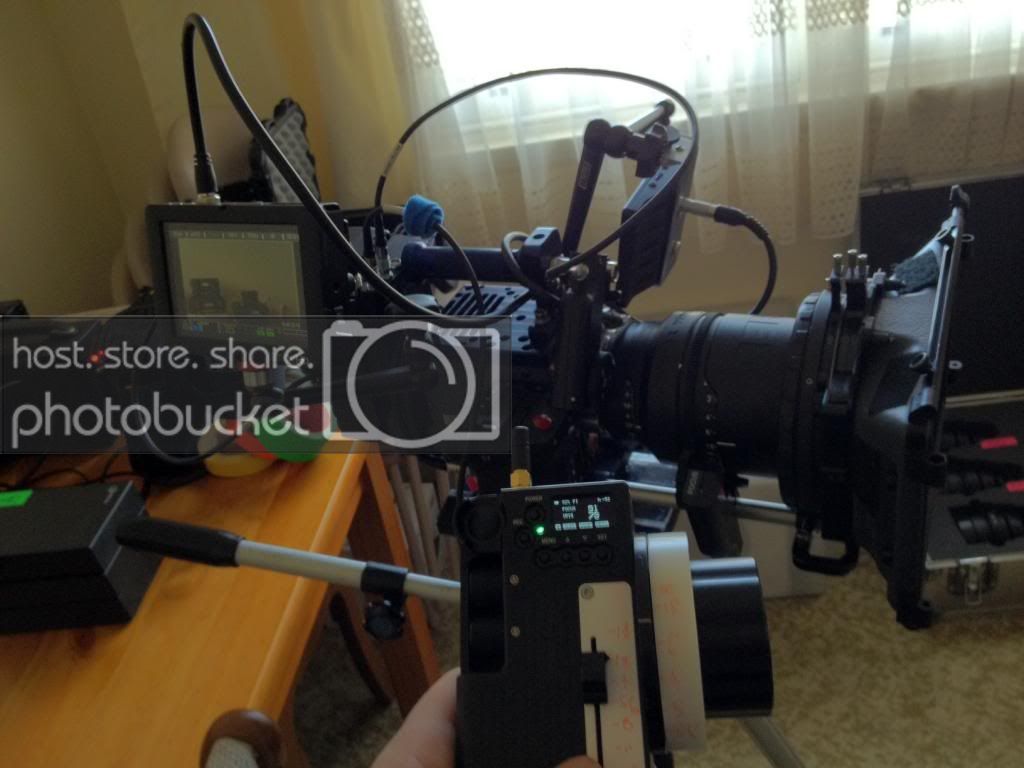
The crane obviously had a remote pan/tilt head. Wireless control of focus and iris and the image was sent down both HDMI and BNC - HDMI to the crane operator, BNC to the head operator, which daisy-chained out to Video Village monitors.
Attempted using a REDMote to change camera settings and start/stop record, but it was a headache, and it proved quicker/easier to bring the camera down to roll and cut and change settings.
For those who might be interested, pic from about 18 or so months ago, a DSLR rig I was shooting with at the time. Don't seem to work with DSLRs too much these days..
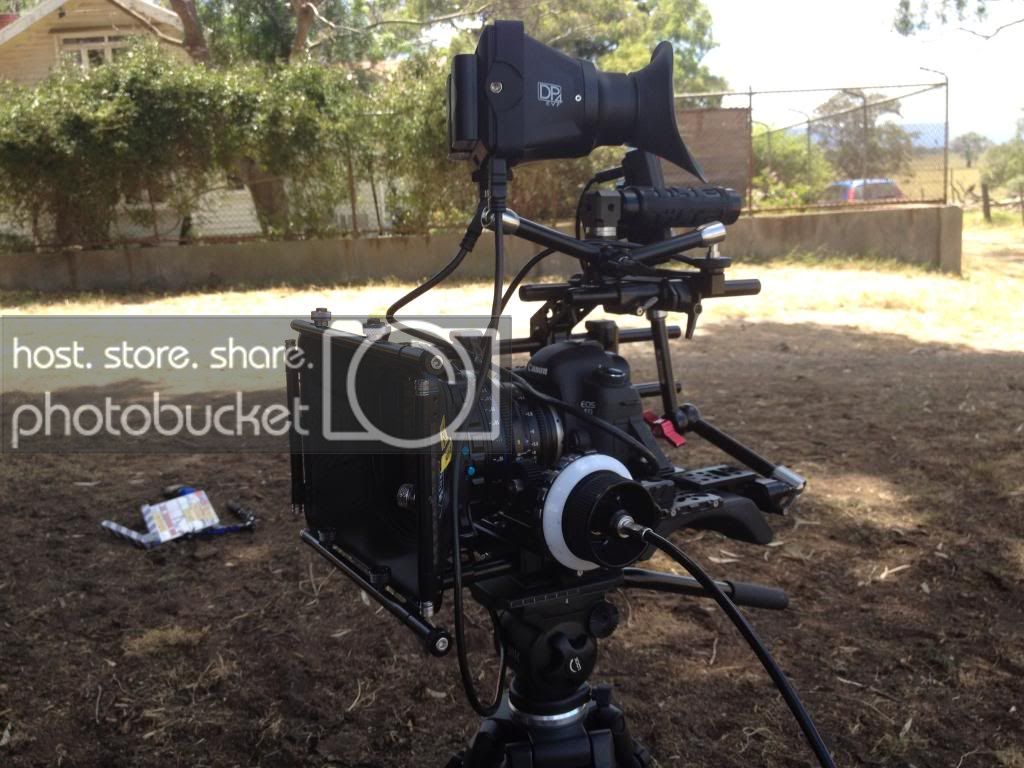

The crane obviously had a remote pan/tilt head. Wireless control of focus and iris and the image was sent down both HDMI and BNC - HDMI to the crane operator, BNC to the head operator, which daisy-chained out to Video Village monitors.
Attempted using a REDMote to change camera settings and start/stop record, but it was a headache, and it proved quicker/easier to bring the camera down to roll and cut and change settings.
For those who might be interested, pic from about 18 or so months ago, a DSLR rig I was shooting with at the time. Don't seem to work with DSLRs too much these days..

OK, I'll play. Here's me in my mix room.
The fact that it doesn't look packed full of cool equipment is one of the things which makes a decent mix room difficult and expensive to build! Pieces of equipment everywhere is going to cause audio reflections and adversely affect the room's acoustics and of course much of the equipment has noisy fans and/or produces other noise (hard disk clicks, etc.). Imagine trying to mix a scene where someone is working on a computer, how would you balance the computer sounds on your soundtrack if half the computer sounds you are hearing are from the computer in your mix room? So all that equipment is in another room (the machine room) which is sonically isolated from my mix room and is all remotely controlled from the mix surface which is the one major piece of equipment (aside from the rear speakers behind me and the front speakers behind the Acoustically Transparent projection screen) which has to be in the mix room.
G

The fact that it doesn't look packed full of cool equipment is one of the things which makes a decent mix room difficult and expensive to build! Pieces of equipment everywhere is going to cause audio reflections and adversely affect the room's acoustics and of course much of the equipment has noisy fans and/or produces other noise (hard disk clicks, etc.). Imagine trying to mix a scene where someone is working on a computer, how would you balance the computer sounds on your soundtrack if half the computer sounds you are hearing are from the computer in your mix room? So all that equipment is in another room (the machine room) which is sonically isolated from my mix room and is all remotely controlled from the mix surface which is the one major piece of equipment (aside from the rear speakers behind me and the front speakers behind the Acoustically Transparent projection screen) which has to be in the mix room.
G

I felt like this post needed something to offset all the high-end fancy gear (that I'm so incredibly jealous of).
So, behold, my DIY fig rig!
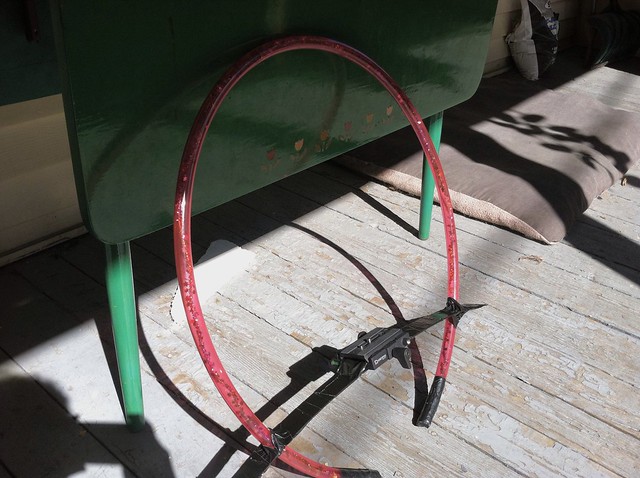
I built it out of a hula hoop, Simpson tie (drilled out to allow the hula hoop to pass through), a lot of black duct tape, and a quick-release plate. Because what DP/camera operator doesn't want a glittery pink fig rig?
So, behold, my DIY fig rig!

I built it out of a hula hoop, Simpson tie (drilled out to allow the hula hoop to pass through), a lot of black duct tape, and a quick-release plate. Because what DP/camera operator doesn't want a glittery pink fig rig?
Jax's crane and Red setup looks sweet, and Scoopicman has more weaponry and synths than I do! (I'm gonnna have to show the missus that now, It kind of puts my audio gear 'pile' in perspective!) I could spend months in there pervin through all that gear. 
I'm loving AudioPostExpert's room too. I wish I had the space (and money!) to build such a discrete setup. Very nice indeed. What monitors are you using in there?
Awesome stuff guys, thanks for sharing.
*drool*

I'm loving AudioPostExpert's room too. I wish I had the space (and money!) to build such a discrete setup. Very nice indeed. What monitors are you using in there?
Awesome stuff guys, thanks for sharing.
*drool*
What monitors are you using in there?
I've got a Genelec monitoring system: 3 x 1037c front speakers, 2 x 8050a for the surrounds and a 7071a sub. A few thousand over $25k (£20k) in total but the difficult (and more expensive) part was getting a decent acoustic response from the room!
G
Nice cones. 
I hope this doesn't derail the thread too much...
I know what you mean about the room treatment. My old studio had a lot of work go into making it usable (not as much as that though).
Yours is still pretty small and square too (parallel walls?), so no matter how much we kill the reflections, the room modes can be a pain in the arse! Copious amounts of rockwool in every corner and on every edge can only do so much to the fundamentals. Oh for a room without walls! I'm guessing there's some nice cans for cross ref lurking in there somewhere too?
I'm guessing there's some nice cans for cross ref lurking in there somewhere too?
Have you gone so far as to build the room from the ground up - like hung walls and set up helmholtz traps etc? How much life in the ambience do you prefer for film post? Are you a dry guy or do you prefer a bit diffusion? From the total lack of extraneous gear in there, I'm guessing you're a dry guy?
Isolation must be of utmost importance important too, given the dynamic range of what you work with?
Sorry for all the questions, but I'm coming from a music prod background so it's good to see how other more specialist movie audio guys like to work.

I hope this doesn't derail the thread too much...
I know what you mean about the room treatment. My old studio had a lot of work go into making it usable (not as much as that though).
Yours is still pretty small and square too (parallel walls?), so no matter how much we kill the reflections, the room modes can be a pain in the arse! Copious amounts of rockwool in every corner and on every edge can only do so much to the fundamentals. Oh for a room without walls!
 I'm guessing there's some nice cans for cross ref lurking in there somewhere too?
I'm guessing there's some nice cans for cross ref lurking in there somewhere too?Have you gone so far as to build the room from the ground up - like hung walls and set up helmholtz traps etc? How much life in the ambience do you prefer for film post? Are you a dry guy or do you prefer a bit diffusion? From the total lack of extraneous gear in there, I'm guessing you're a dry guy?
Isolation must be of utmost importance important too, given the dynamic range of what you work with?
Sorry for all the questions, but I'm coming from a music prod background so it's good to see how other more specialist movie audio guys like to work.

The room is about 28ft x 18ft x 12ft, a good size for TV work but small/very small for theatrical work. It maybe looks smaller than it is in the photo because the perspective seems a little skewed, the screen is actually 16:9 ratio and about 14ft wide but appears on the photo more like a 2.35 ratio. In reality the room is not square/rectangular, the dimensions I've just given I've described as "about" because they vary. The distance between the structural side walls at the front (screen end) is actually about 24ft which gradually reduces down to about 18ft at the back and the ceiling varies between about 14ft at the front to 10ft at the back. It just looks square/rectangular because of the secondary skin and acoustic treatment. In places there is 3ft between the skin (plasterboard/plywood) and the structural wall.
In post we tend towards a much drier acoustic than in music production, so more absorption and less diffusion. 0.5 sec RT is pretty average for a music production room, half that is more common for audio post.
Yes, isolation is particularly important, not just because of the dynamic range but because of the content itself. Creating ambiances containing distant: Traffic noise, construction sounds, dog barks, etc., both from an exterior and interior perspective is pretty ubiquitous and it would obviously be virtually impossible to balance these ambiance elements if any of those same sounds were leaking into the mix room from outside. Additionally in audio post we frequently have to create/mix material down to 25Hz or so, whereas music production is rarely concerned with anything much below 40Hz and as you know, those low freqs are a real bugger to deal with and that's where most of my time (and money!) got eaten!
BTW, cans are of limited/no use in audio post because the vast majority of audio post work is in surround.
G
In post we tend towards a much drier acoustic than in music production, so more absorption and less diffusion. 0.5 sec RT is pretty average for a music production room, half that is more common for audio post.
Yes, isolation is particularly important, not just because of the dynamic range but because of the content itself. Creating ambiances containing distant: Traffic noise, construction sounds, dog barks, etc., both from an exterior and interior perspective is pretty ubiquitous and it would obviously be virtually impossible to balance these ambiance elements if any of those same sounds were leaking into the mix room from outside. Additionally in audio post we frequently have to create/mix material down to 25Hz or so, whereas music production is rarely concerned with anything much below 40Hz and as you know, those low freqs are a real bugger to deal with and that's where most of my time (and money!) got eaten!
BTW, cans are of limited/no use in audio post because the vast majority of audio post work is in surround.
G
Thenks for the info, APE. 
It's interesting that your room tapers in towards the rear, as this would be a death knell for a music studio, with the early reflection points converging over the mix position instead of opening up and spreading them out. Obviously given how dry the room is it's far less of an issue for a PP setup like yours.
Sorry to keep going on, but do you use any ceiling clouds or floor treatment too?
I've worked in some really dead rooms before, and at one point it was all the rage. Thankfully nowadays the rooms tend to be a bit more open sounding in music studios - kill the reflection points, annihilate the modes with extreme prejudice (you can never have enough traps!), and then diffuse everywhere else to keep the ambience lively, but tamed.
Good point about the cans... derp. I didn't even think about that as I was too busy nerding out over the treatment.
Thanks for the rundown again mate. It's always interesting to find out how others do things.

It's interesting that your room tapers in towards the rear, as this would be a death knell for a music studio, with the early reflection points converging over the mix position instead of opening up and spreading them out. Obviously given how dry the room is it's far less of an issue for a PP setup like yours.
Sorry to keep going on, but do you use any ceiling clouds or floor treatment too?
I've worked in some really dead rooms before, and at one point it was all the rage. Thankfully nowadays the rooms tend to be a bit more open sounding in music studios - kill the reflection points, annihilate the modes with extreme prejudice (you can never have enough traps!), and then diffuse everywhere else to keep the ambience lively, but tamed.
Good point about the cans... derp. I didn't even think about that as I was too busy nerding out over the treatment.

Thanks for the rundown again mate. It's always interesting to find out how others do things.

It's interesting that your room tapers in towards the rear, as this would be a death knell for a music studio, with the early reflection points converging over the mix position instead of opening up and spreading them out.
It's not quite as simple as a straight taper to the rear but it would take too much explaining in a thread we're already hijacking! It's the structural walls which taper, not so much the interior walls/surfaces and there is some diffusion as well as absorption, so it's not completely dead, just drier than most music studios. Don't forget, with surround you've got a lot of additional early reflection points to consider compared to stereo, so a drier acoustic is preferable to maintain an accurate perception of directionality within the 360deg sound field.
There is both ceiling and floor treatment, again a balance of absorption and diffusion and of course the floor is suspended. Overall, the room is pretty good for audio post (HDTV more than theatrical) and even not bad for music mixing/mastering. I've worked extensively in many high profile music studios in the past but I'm getting used to the fact my room is much drier and I'm able compensate quite well when working on music only (rather than audio post) projects. Even with the time/money spent on it, it's still far from perfect of course but considering I only had a budget of quarter of a million or so I'm very pleased with the results.
G
Manfrotto Sympla Variable Plate.
Just got this today. I looked and looked for an affordable and good rail plate. I hope this is a good one. And, I already had a Manfrotto head and legs, so I thought it made sense to get a Manfrotto plate, too. I like that the quick release plate on it has that safety button/catch to keep the plate and your camera from sliding right off if the plate tightener fails, or something. I'm under the impression that those el cheapo rail plate systems you can get on Ebay and Amazon don't have that feature. But I don't know.
Like others have said, it does seem built like a tank...mostly metal (steel?) But that's good 'cause it makes it seem nice and solid. I'm thinking and hoping that its added weight will actually help make the fluid head's movements more smooth and fluid.
But one of the main reasons I wanted a rail plate was to get the DSLR up and away from the fluid head's tightener knob thingy so it would be easier to tighten. Alas, as you can see, the rail plate's tightner knob thingy is also similiarly under the DSLR. Oy! But, really, I got it tightened very easily, anyway.
I guess that's what I get for shooting with a DSLR.
I don't know if getting a follow focus would fix that by allowing me to position the DSLR further back from the tightener? I have to have it forward like I have it in that picture since I need to be able to turn the focus dial with my fingers. I'd like to get the Edelkrone follow focus, but I don't know if that's in the cards.
My next purchase will be a view finder so I can shoot my niece's wedding in the sunlight of summer, if need be.
Richy, that's a concise and powerful setup. 



Last edited:




